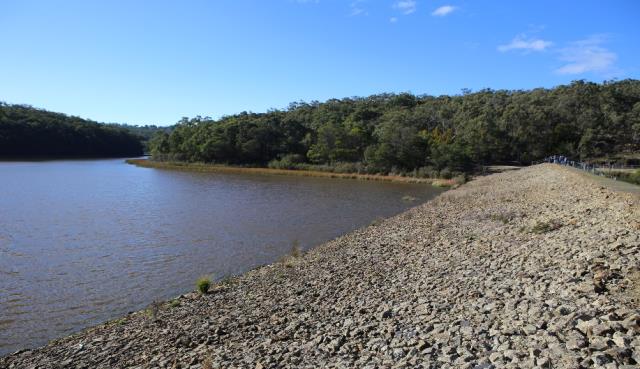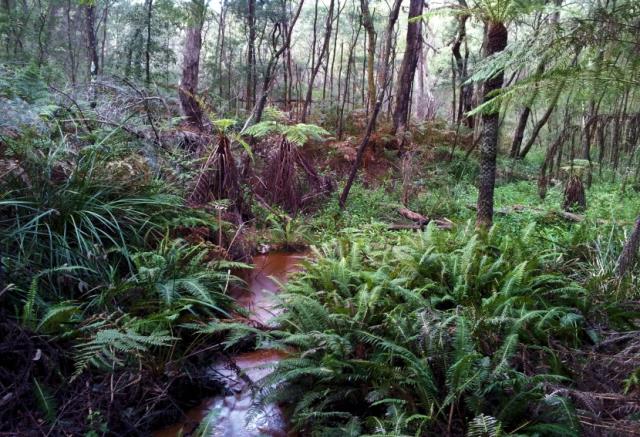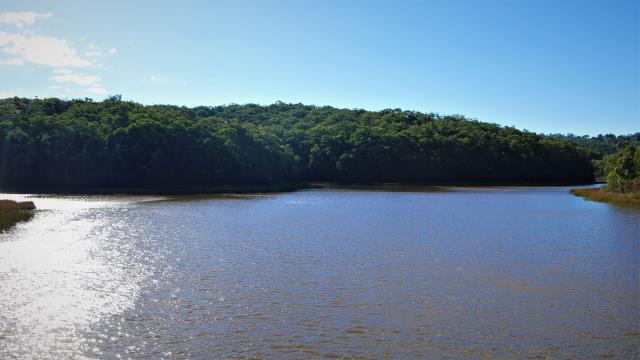
Reader submission
The Save the Beaconsfield Reservoir Action Group’s HARRY JENSEN is concerned about Melbourne Water’s proposal for the Beaconsfield Reservoir, including the lowering of the water level. The reservoir was permanently disconnected from Melbourne’s water supply and distribution network in 1988.
On 25 July, a visit to Beaconsfield Reservoir within the Beaconsfield Nature Conservation Reserve (BNCR) was organised with Gembrook MP, Liberal Brad Battin, by the Save the Beaconsfield Reservoir Action Group (SBRAG).
Other attendees included the Cardinia Environment Coalition (CEC) president Lindsay McNaught and their new Landcare facilitator, Nicci Starke.
Brad has been a dedicated supporter of saving and preserving the reservoir and its water since 2018.
On 14 May, 2021, Brad wrote a strongly worded letter to Cardinia Council, advocating “the need for continued community access to the area to enjoy this natural asset”.
“I join the community in supporting the 100-year-old reservoir’s preservation and I believe it should not be destroyed.”
Cardinia Council raised concerns last month at the Officer and District Community Association that Melbourne Water (MW) may soon be commencing the water drawdown in the reservoir, with no further community consultation being undertaken as promised by Melbourne Water.
Melbourne Water has recently confirmed that “the date to commence the draw down is still to be determined”.
Earlier this year on May 18, Jeff Bourman MP, the Shooters, Fishers and Farmers Party Member of the Victorian Legislative Assembly, also arranged a visit to Beaconsfield Reservoir.
He was interested in finding out what the local community were going to lose if Melbourne Water proceeded with its preferred option. Jeff asked Melbourne Water’s executives numerous questions about their reasons for their decision and how the planned “upgrade” would affect the ecosystem and the local community. Following his visit, Jeff held a meeting with the Environment Minister’s advisor and said he was looking for a positive outcome to occur.
In May 2021, Cardinia Council moved a strongly-worded motion concerning Beaconsfield Reservoir, which was sent to Melbourne Water.
The 12-point motion asked that “…all responsible State Government authorities work together with the local community to develop a long-term strategic plan that delivers the best outcomes for the environment and community interests”.
It added “…that no further works are to be considered or proceeded with the reservoir’s dam wall until such time this future strategic document is developed and created”.
The community is still waiting for these and other parts of the motion to be discussed in detail.
SBRAG was approached by MW early in March this year to hold a joint meeting, “to discuss community engagement moving forward”. It is SBRAG’s genuine desire to try to resolve all points of contention, so that a conclusive decision is reached.
A second meeting was offered for early May, but did not eventuate.
After reaching out to Melbourne Water recently, there is an offer of a new meeting with MW soon.
Brad’s visit also provided an opportunity to have a friendly and respectful discussion with the president of the CEC, Lindsay McNaught, who stated the CEC does not hold a position on what happens to the water.
However, this raises some important questions: What does the CEC actually consider will happen to the lush bushland when Melbourne Water drains most of the reservoir? Thanks to the reservoir, this bushland thrives due to the humidity and water table. What concerns do the CEC have for fire safety within the BNCR and surrounding properties? The Beaconsfield Reservoir is currently about 700 metres in length, but when Melbourne Water finishes the draining, this will be reduced to approximately 150 metres in length.
Lowering the water level will have dire consequences. It is of concern that the mature trees at the water’s edge may start to die, the melaleucas that fringe the reservoir and thrive on wet soil will dry out and die and, generally speaking, the entire area will be affected by an artificially induced drought.
Lowering the water level will place the reed beds on dry land resulting in nests being exposed to predation by foxes and feral cats.
It is likely that many water birds will vacate the reservoir.
The food source that the birds rely on, such as the insects and aquatic life, will be reduced by the reduction in their habitat.
Once the water is lowered, it will take many years for the reed beds to re-establish on the diminished waterline surrounding the remaining small dam at the foot of the reservoir wall.
Melbourne Water has published questionable computer-generated landscape pictures of their vision of the reservoir’s future appearance. These are shown in the document, Beaconsfield Dam Safety Upgrade, Update December 2021.
The fact is that reducing the water capacity from the current 525 megalitres to only 90 megalitres will result in a small dam remaining. Less water will narrow the ecological biodiversity of flora and fauna that needs abundant water to exist.
We must not forget that the reservoir in its current form represents vital water, essential for the safety of all surrounding properties in Beaconsfield Upper and south of BNCR to Officer and Beaconsfield, from potential future bushfires (remember Ash Wednesday). Firefighting helicopters need as much water access as possible in an urgent situation.
The current water surface will accommodate several helicopters. Helicopter collection of water for firefighting in the BNCR was approved by Andrew Crisp, Emergency Management Commissioner in December 2018.
It is a great pity for the community that the BNCR remains locked up, with public access limited and the public unable to make an informed opinion.
The following works were originally offered by MW if they proceeded with the Partial Dam Decommissioning Upgrade: “…to increase public enjoyment of nature, as part of the work”.
Signage for walking tracks, nature information, historic values and safety, self-closing remote-operating solar-powered gates, car park at Dickie Rd entrance and seating, picnic tables, shelter and toilet facilities.
It is still unclear whether MW will be undertaking these site enhancements and public facilities as stated in the May and July 2019 Dam Safety Works – Community Updates.
Save the Beaconsfield Reservoir Action Group has a substantial Facebook following now of more than 730 supporters. We are interested in any of the Gazette’s readers joining our campaign to save this beautiful community asset and significant historic site.
In 2021, our group sent a petition to the Victorian Parliament with more than 1700 signatures from Cardinia and Casey communities, which has yet to be resolved in Parliament.
We are keen for the wider community to become aware of what is happening to Beaconsfield Reservoir and why Melbourne Water should be consulting our communities prior to draining the water and undertaking the upgrade.
The local community and SBRAG want transparency and an outcome that is not simply cost-driven and concealed from the public.









